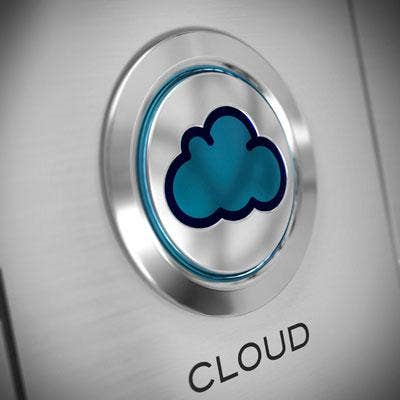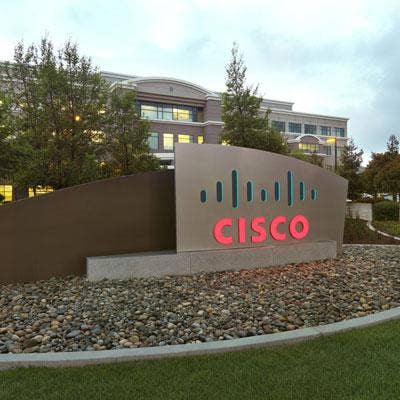Q&A: Big Switch Networks CEO On Why The Channel Needs A White-Box Alternative To Selling Cisco

Looking For An Alternative
Big Switch Networks CEO Douglas Murray says channel partners are straining to differentiate themselves in the market because they're all selling the same traditional data center switches. The solution is latching onto the growing trend of bare metal, white-box switches with software-defined networking on top that's tailor-made for the new cloud era, Murray said.
"You can go into a sale and it's not just, 'Hey, I'm here to sell another box like Cisco' -- it’s 'I have a new architecture that's easier to use, it's automated, your installation time will be reduced by 10 times … from a CapEx perspective, it's at least 50 percent cheaper," said Murray, who has led the SDN startup to 365 percent growth year over year.
Bare metal switches accounted for 12 percent of data center ports shipped worldwide in the first quarter of 2015 as sales grew 11 percent year over year, according to Infonetics Research. Infonetics says bare metal switches will make up nearly 25 percent of all data center ports shipped by 2019.
Here, Murray explains why the time is right for white-box solutions.

Why should solution providers sell white-box solutions in 2015?
Partners are competing in a space where you have Cisco or these other companies selling classic, traditional data center switches, and as a channel partner, a VAR or system integrator, they are in a position where they're differentiated relative to what they're selling. Having that unique value proposition is one aspect, then there's the benefit relative to the pricing piece.
The channel has the ability to then use that as a differentiator.

Is the new cloud era made for white-box switching?
In many respects it is. The cloud players and the hyperscale guys have been on the forefront of this, and that's provided a great benefit for everybody else. If you look into volume relative to white-box and bare metal today, it's actually over 10 percent of the market. White-box costs are being driven down because of the sheer volume of this -- a lot of the initial white-box purchases were the cloud guys buying this at massive scale.
Since companies like Google are buying them in such massive volume, it drives down the cost. As we get to 2016, 2017, that's what's making it much more easily available and readily available for the channel and what we see in more mainstream [businesses].
Who are your biggest customers? It is players like Amazon or Microsoft?
Our biggest customer today, we can't name them, but let's just say it's a very large cloud and software company that's in the Northwest U.S. They are a big customer of ours and deployed our products in at least 20 data centers around the world. (Editor's note: Microsoft is based in Redmond, Wash. and Amazon is based in Seattle)
[The] U.S. federal [government] is actually very big for us as well -- we have several deployments there. In fact, we have a very sizeable OpenStack deployment in the intelligence community. Federal is really embracing OpenStack, so it make sense that it's a good place for us. Also we have big financial household-names customers in the U.S. and in Japan as well.

What are the differences from customers who are buying white-box versus the traditional Cisco switch? What type of customers are coming to you?
It tends to be very use-cases-orientated. There's monitoring use cases and OpenStack use cases, because people are really looking for innovation relative to the networking side of OpenStack. You want to have networking optimized for OpenStack, and that's typically something where you want to use some of these emerging architecture[s] because, in our case, rather than have every single box have to send something up to the OpenStack design, you basically have our controller, which is the centralized view that then sets everything up into OpenStack.
Another use case is VMware. Customers say this works really well for these areas that they play in, but most of their data center is VMware-oriented. Use cases with NSX do really well and we have a bunch of assets we work with across VMware.

On the security front, Cisco says white-box runs a security risk. Do you think this is true?
No. A lot of what is built by the traditional guys is actually built by the same ODM manufacturers. This is why Google and Facebook went down this path. The switches that they're making are the same switches that are leveraged by the major networking vendors today. Every vendor, including Cisco, uses Broadcom today on the silicon side. You tear apart a branded box, [and] in many cases they're actually from the same manufacturers in Taiwan and China.
The difference then lends itself to the differentiator in software, and each of the vendors in the space has their own play relative to what they do in software.

What can Big Switch do on the security front that other vendors can't?
In our case, we have one key advantage from a security perspective, which is our great speed.
As a vulnerability comes out in the market, we have the ability to react very quickly and be able to have it where -- from a remediation perspective -- the ability to go through and accelerate fixes into the technology. Since we can do upgrades basically in real time, you don't have to shut things down. We can upgrade our largest configuration we offer in approximately 10 minutes. If we find something from a security perspective, we can go and say, "Here's the fix. By the way, we can help you upgrade your switch and you can do the whole thing in less than 10 minutes." In the traditional model, … it would take hours, and you would have to take switches down, and it's very extensive.

Are you converting any Cisco partners?
It's not always about converting, but it's more about having partners also sell our products and be in a position where if the customer says, "For this use case, what do you think?" they can pick the right solution. So many partners want to be in a position where they have flexibly and choice.
For us, it's really about partners who tend to be more leading edge that tend to have newer technology. Partners working on OpenStack and partners focused on network monitoring. It's not about replacing Cisco partners or converting partners, the starting point is having them also sell us as another option relative to specific use cases.

What geographies are you selling in and eyeing for expansion?
Right now, our priority countries are U.S., Japan and Taiwan. The next wave we're looking at is Korea, Australia and the U.K. We need to continue our build out to more and more channel partners.
As we're building for a geography, we map out what channel partners are required for us to be successful. It's building out as we go from geo to geo and making sure we prioritize the channel, because as a company we get a lot more lift by getting close to channel partners and our big strategic alliances like Dell, Mirantis and VMware.

How long will it take the mainstream market to fully adopt the white-box model in the data center?
In the long term, it will increase and spread itself out across not only data center, but then campus and WAN architectures. It's going to take many years. I think we're in the second or third inning in a nine-inning baseball game, but it's very clear the architectures are changing.